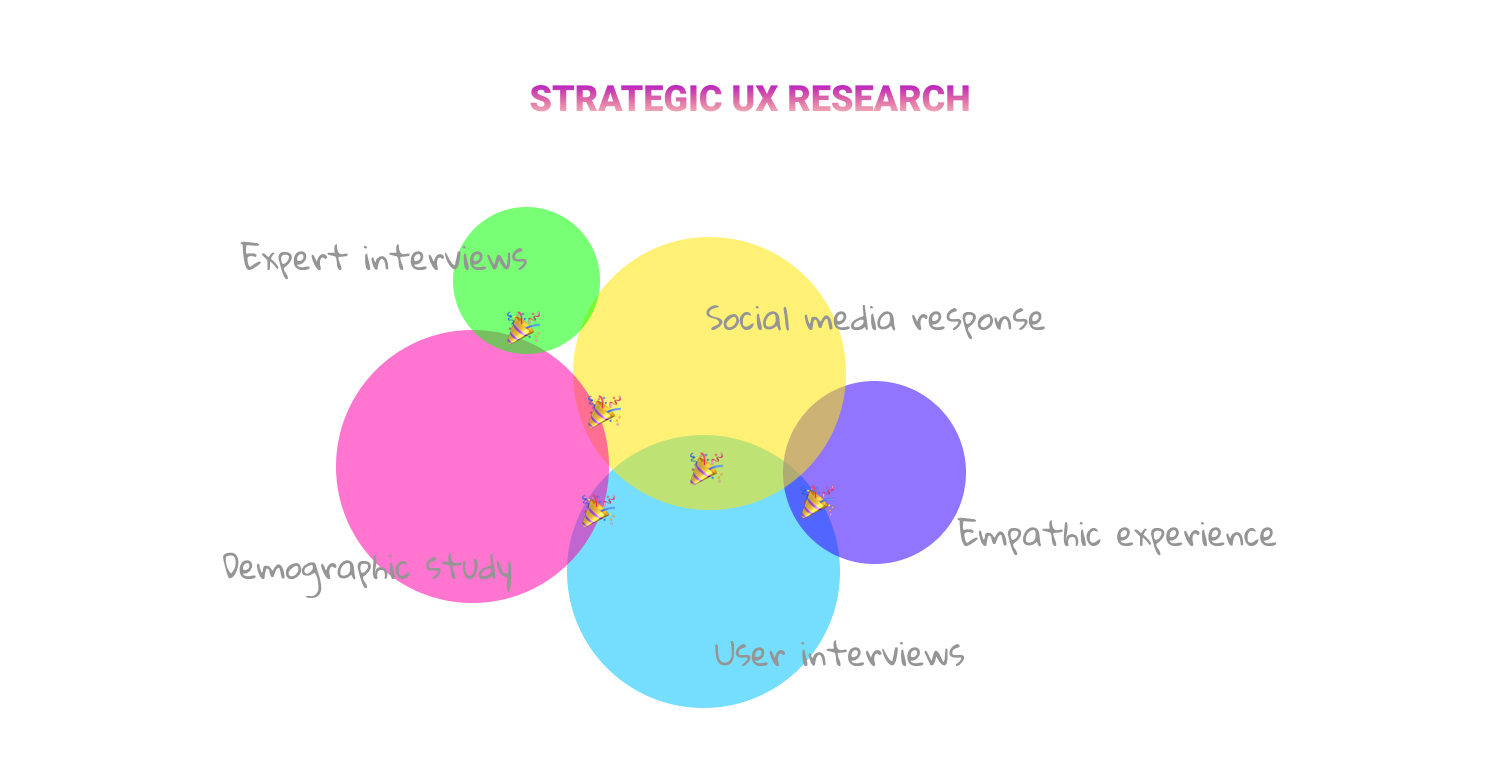Experience designers know how people go about things, what makes them happy, and how to create products that satisfy the customer and the client.
UX knowledge is a result of research, gut feeling, education, and experiment. All of these take time to accumulate and once there, they form a UI/UX designer’s vision of the world and a shield protecting them from the unknown. However, the unknown is the best thing that can happen to you. Evolutionally, we are wired to shy away from the unknown but materialistically, the unknown is the source of progress.
UX research is an art of mastering the unknown and putting it to work for the service of the people and the business. UX research is why startups should never fail. The lack of one is a trap that will cost someone their dream or their job. And whose job it is going to be is a toss-up.
UX research is a non-design activity. It’s not sexy. And that’s why people bail on it.
The projects tend to be either short on the budget or the time. That’s why the teams always have to flex something. If money and time can’t be flexed, they flex features or production stages. UX research is usually the first victim. Designers might be themselves delusional about their knowledge and under the sway of cognitive biases. In that case, it might seem no UX research is necessary and at some point, things will play out somehow. This is UX research concealed in the design process only to damage it. Ben Ralph called UX research a blocker and showed how to overcome it in a great article on using Agile UX research.
Generic UX research
A typical UX/UI design agency process has some UX research built in but it’s not a dedicated sprint, rather a cross-team research of similar products on the market. Run by a designer, native UX research does nothing but interrupts the production with its small findings.

Such process is a pain in the neck for the entire team. No one likes to be interrupted and no valuable research can be conducted in a hurry. Apart from Google who, apparently do rapid UX researches within one week, most companies have to decide what to do while in the middle of doing it.
A generic UX research squeezes itself in between teams and sprints and gets shoved back and forth, that’s why people bail on it.
Dedicated UX research
Sometimes UX researchers are in a separate team that gets called on a project before the first screen is laid out and the first line of code is written. They might work for weeks and months before the production team. Sometimes this type of UX research is charged for separately. Sometimes these teams become separate companies with a very specific service set.
On paper, that’s way to go. In reality, this detachment from the production team leads to more bureaucracy which kills the value of the UX research. The insights that might sky-rocket your product are only valuable if implemented in timely fashion. The more isolated the UX research, the lesser respect it gets.

In this case, UX researchers are contributing to the neverending standoff between designers and developers, whereas ideally, their job would be to mitigate all the argument with rock-solid UX research data. So how can we make UX research a stage of production without interrupting the process and have its voice heard?
Collateral UX research
A viable way for any UX research to work is to be appropriate for both the high-level strategic decision-making and in-product field decisions.
Strategic research is long-term data that forms the common macro-level understanding of the product between every team member from stakeholder to QA engineer.
Filed research addresses specific features and ways to go about separate user tasks. It’s short term data helping teams make micro-level choices.
Strategic research
Before a website or software is taken into production, the owner has to have evidence that people need it. The strategic UX research helps the production team validate that evidence. Sometimes there is no real data to start with and in case of failure, the agency will be held accountable for building an irrelevant product.
The strategic UX research studies people’s needs, wants, pains, and sins to identify who we are designing for and why.
This is part of the collateral research because there’s to end to it as long as the product is out there. This research keeps the product up-to-date and helps it evolve along with its users. To come up with a strategy, you have to put time into research but never get too attached to its results. Strategic UX research is reevaluation and constant observation.
When conducting a strategic UX research, it’s important to look for the right insights which include:
- Demographic study
- User interviews
- Social media response
- Expert interviews
- Empathic experience

These insights might intersect and this is where the most valuable 🎉 strategic data will shine through. With that data, we can then take the product and see if the original idea and direction correspond with UX research results. We can put these findings into a document and use it as the main reference material throughout the development stage.
Field research
During the design and development stages, there might occur serious arguments about specific features. To help us through those arguments, we use data. Strategic data are good for overall business decisions, but to solve a physical problem like navigation pattern between the screens, button placement, or content disclosure, we need field data.
Filed data are like military operational intelligence data. They have to be small, fast, and timely. Also, as specific as it gets to raise no further questions. Stakeholders and the owner don’t need to deal with this research which is enclosed within the production team. The output has to be as simple as possible, in the form of clues, not a document.

The success of the field UX research depends on the researcher’s dexterity in UX. The more robust the toolbox, the quicker and the more effective the decisions.
Note, that this time we are not leaving UX in the care of designers alone.
UX is a cross-team responsibility and a discipline with design in the center but a reach that goes way beyond screens.
Why UX research matters
Sometimes a product can score big time by accidentally hitting the spot where either no competition presented a real challenge or a method chosen makes a difference. Unfortunately, this is not something UX teams can rely on in helping the client help the people.
It’s easy to mistake UX research for plain assumptions and wishful thinking. Personal experience can be a huge factor in the decision-making process. However, personal evidence is only a fraction of data we could use to design products.
The problem is once personal experience becomes the primary source of one’s UX decisions, the responsibility of the wasted time, money, an reputation will fall on that person. It’s much safer to use the designated UX practices to acquire and evaluate objective truth about users and their requirements.
What might first seem like a redundant part because “everybody knows that…”, later will show the vulnerability of untested assumptions. The research is not something you can put into your UI/UX portfolio but a solid research discipline will be the reason for your portfolio to grow.
So, it’s either an ultra-sensitive team with a magical UX intuition or the everyday grind on UX research data.
If people bail on UX research, do they automatically believe in magic?
